Art & Exhibitions
What Went Wrong in 2011? At the Canada Pavilion, Stan Douglas Surveys the Arab Spring, Occupy Wall Street, and the Revolution That Wasn’t
The two-part exhibition looks at four distinct events that spilled out into the streets.
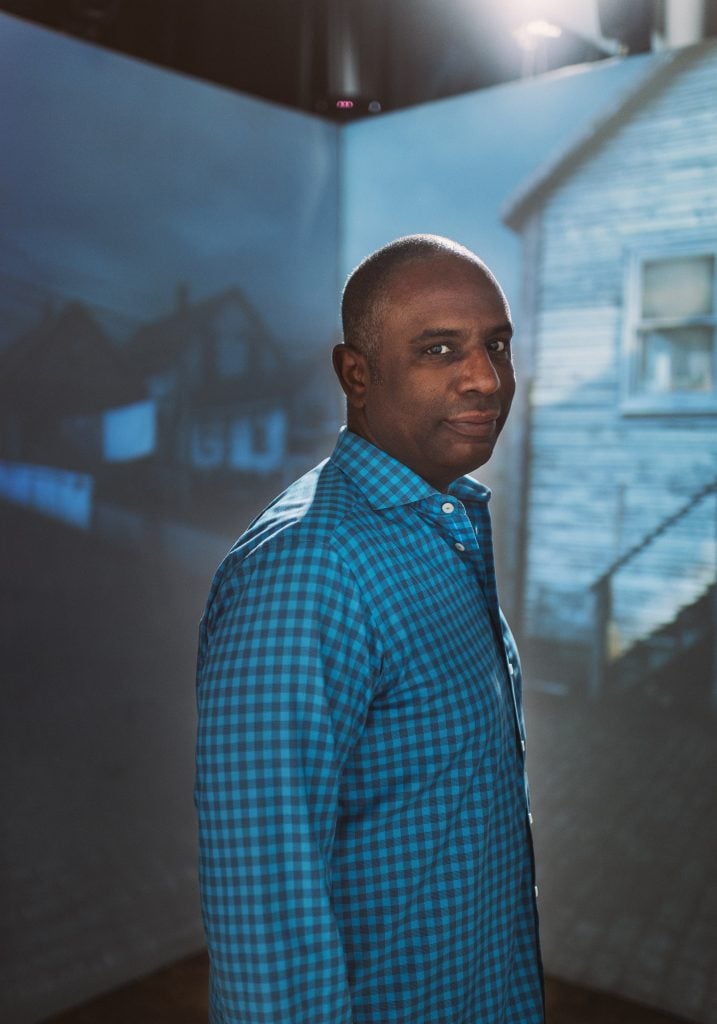
The two-part exhibition looks at four distinct events that spilled out into the streets.

Kate Brown

After the past two calamitous years, our memories of 2011 may be hazy, but the year was politically significant for several uprisings around the globe, from Occupy Wall Street to the Arab Spring. But what happened after the protests were kettled off by police and eventually dissipated? How has populist anger fomented ten years on? Stan Douglas asks these questions with his two-part pavilion for Canada in Venice.
In a triumphant turn, Douglas looks at four distinct uprisings that were different in character but similarly driven by disenfranchisement and a sense of frustration with social systems. The acclaimed Los-Angeles and Vancouver-based artist is a key voice internationally working in image-based media, and once again, he has turned to music to peg his story, this time employing two popular genres that served as anthems for the political turbulences that rocked 2011.
Across four monumental photographs that have been painstakingly staged and stitched together, as well as a major two-channel film installation, the question we are left with at the end of viewing both halves of “1848 ≠ 2011” is: where have we arrived at since 2011, and what are we left with? The answer is, of course, deeply unsettling, as we face unprecedented and ongoing challenges with social ruptures, and race and class inequality, and police brutality.
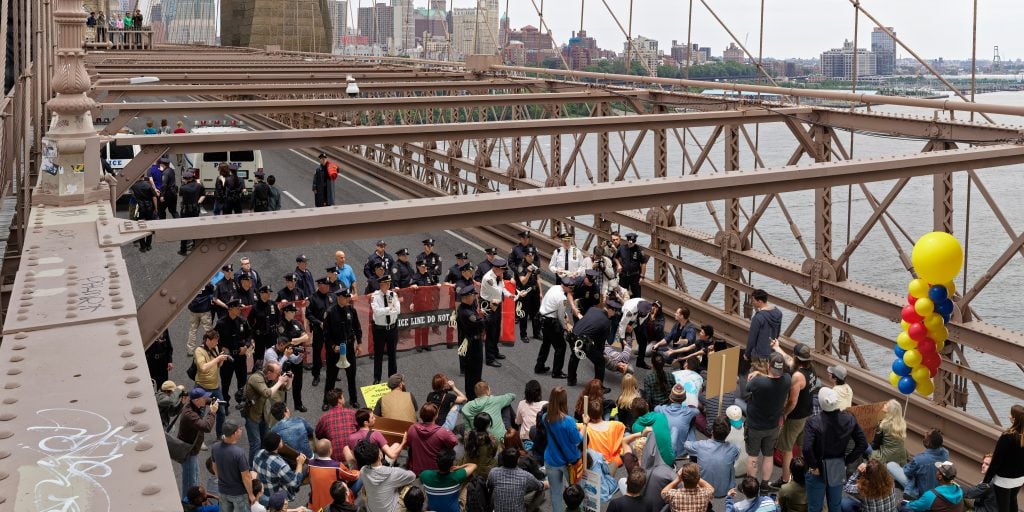
Stan Douglas New York City, 10 October 2011, from the series “2011 ≠ 1848” (2021). © Stan Douglas. Courtesy of the artist, Victoria Miro, London and Venice, and David Zwirner, New York, London, Paris and Hong Kong.
For his project in Venice, commissioned by the National Gallery of Canada and curated by Reid Shier, Douglas has drawn a line between 2011 and 1848, a year of several revolutions across Europe known as the Springtime of Nations. This marked the beginning of the end of absolute monarchy rule in Europe and prompted a major shift toward democracy and liberalism.
“1848 is exactly what I thought about when these events were going on [in 2011], except that the kind of democratic reform that 1848 brought, the kinds of nations that resulted from those revolutions—that did not happen this time,” Douglas told Artnet News. “While 1848 allowed for some democratic reform, it was clear that this was not going to be the case with what happened in 2011.“
In his presentation at the pavilion, four monumental photographs string together four disparate occurrences. In the first, diverse groups of people sit in the twilit streets of Cairo, incubating what would become the Arab Spring; in the next photograph, we see the Vancouver 2011 riots, which spilled into the streets when a local hockey team lost the Stanley Cup—Douglas sees this moment as a catharsis that had less to do with sports than with frustrations around gentrification in the city, which had become increasingly unaffordable due to speculative real estate. Another image portrays a standoff in the Hackney riots in London; and the final scene is of police kettling Occupy Wall Street protesters on the Brooklyn Bridge in New York City.
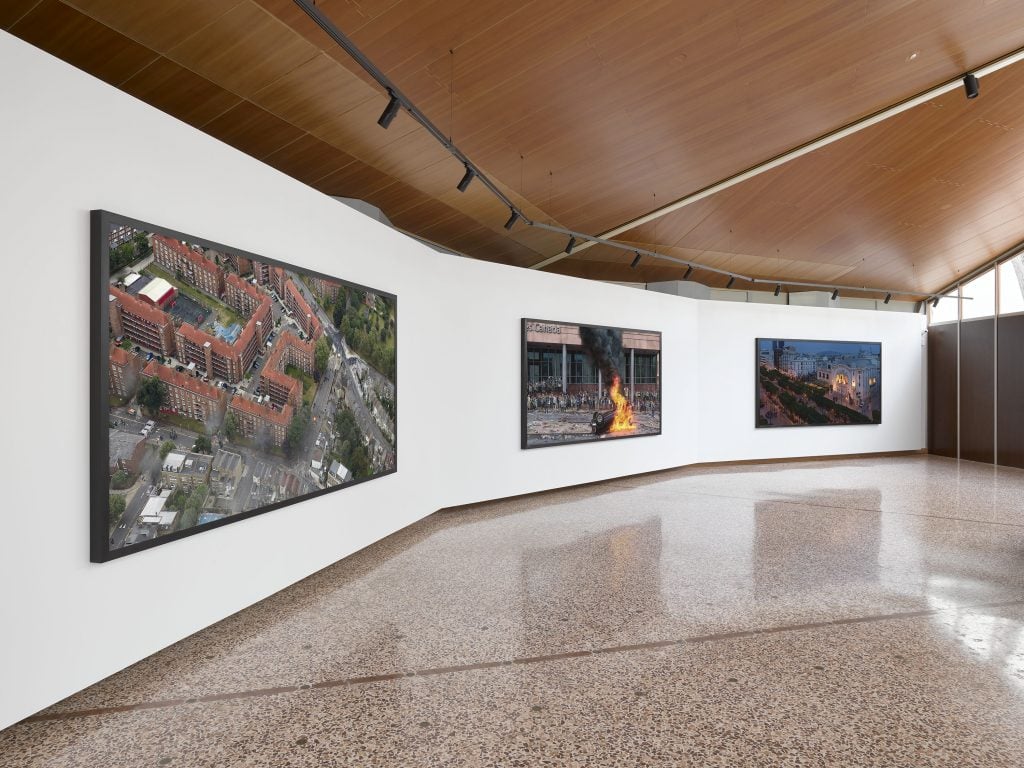
Installation view of “Stan Douglas: 2011 ≠ 1848,” at the Canada Pavilion at the 59th International Art Exhibition – La Biennale di Venezia. Photo: Jack Hems. Courtesy of the artist, the National Gallery of Canada, Victoria Miro, and David Zwirner.
“Even though these events were not organized by a political party, there was an intuition on the part of the participants that something was wrong and that something needed to be done, even though they did not quite know what that something was,” said Douglas.
Douglas’s works often balance on a razor-sharp tipping point, depicting a moment in flux. He recreates historical events but artificially stitches together archival and staged images to produce a kind of hyperrealism. And while he usually mines niche or overlooked events in history, what is poignant about this most recent project is that it focuses on events that we all witnessed in real time on our cellphones.
These cathedral-worthy photographs find their proper setting in Venice, a city brimming with larger-than-life works that tell a story in multiple acts on a single canvas. Douglas’s images leave you similarly overwhelmed by their catharsis and clarity; from edge to edge, the photographs borrow the raw narrative power of Brueghel and the emotional electricity of Titian, but with a Kubrickian attention to detail. Each image, which uses largely actors, takes months to create.
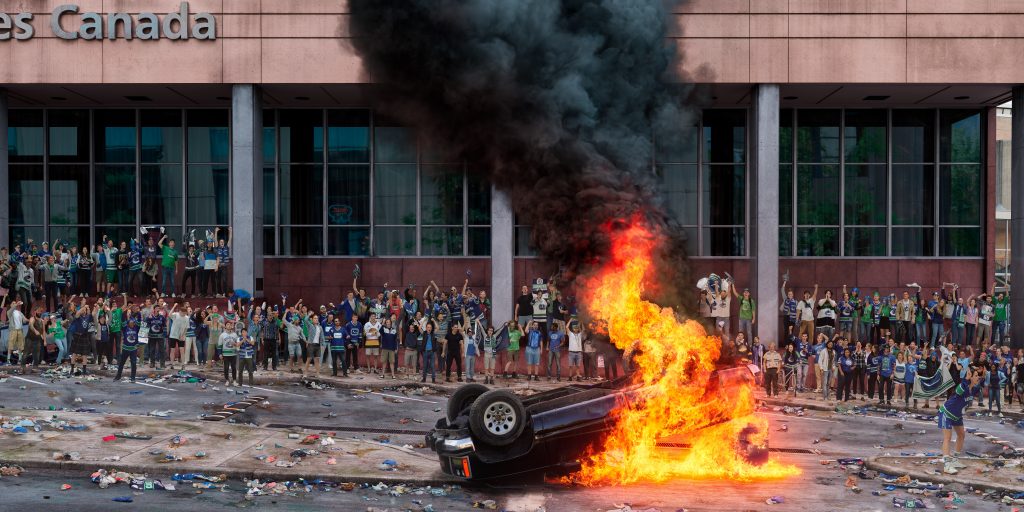
Stan Douglas, Vancouver, 15 June 2011, from the series “2011 ≠ 1848” (2021). ©
Stan Douglas. Courtesy of the artist, Victoria Miro, London and Venice, and David Zwirner, New York, London, Paris, and Hong Kong.
“It was not a revolution but an expression of political despair,” said Douglas of why he grouped these four events. “There was a lot of anger, frustration about the lack of representation of their interests by their local governments in very diverse ways. But my frame is to say that these are not just policing events, these are political representations.”
The second half of the presentation, a film called ISDN, is, somewhat inconveniently, a vaporetto ride away from the Giardini at the Magazzino del Sale, a 500-year-old salt storage house. The large cavernous room is much better suited to film than the light-filled Canada pavilion, but it feels unfortunate that the two bodies of work cannot rub up against each other.
On two separate screens, the camera hovers around a pair of grime rappers, TrueMendous and LadySanity in London, and two Mahraganat lyricists, Raptor and Youssef Joker in Egypt. Mahraganat emerged as a street music in the mid-2000s, and although it is one of the most popular genres in the country, it is controversial with the government and has even been banned from being played publicly.
Grime has a similar history in the U.K.; Lethal Bizzle’s 2011 song “Pow!” was de-platformed and banned from music venues, as authorities claimed it would incite violence. After tuition fees were raised nationally in 2010, the song became an anthem of the frustration, and anger towards the hike in costs folded into the race-based protests in Hackney.
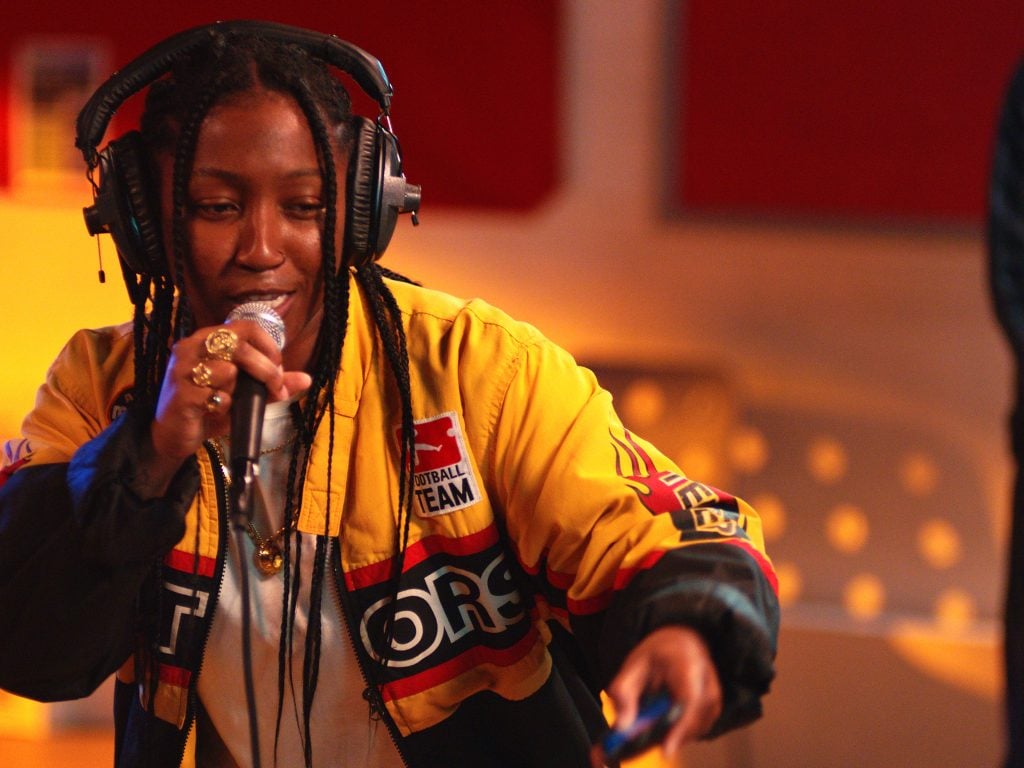
Stan Douglas ISDN (2022). Still from two-channel video installation. © Stan Douglas. Courtesy of the artist, Victoria Miro, London and Venice, and David Zwirner, New York, London, Paris, and Hong Kong.
As the lyricists race through fierce verses pounding at a blistering 140 beats per minute, Douglas conjures a fake call-and-response session, bringing together two music genres that emerged out of states of disenfranchisement in distinct communities in both countries. (Despite their differences, both genres’ beats are made on Fruity Loops, a low-cost and often pirated software.)
On screen, the musicians vent the frustrations of everyday life, weaving in triumphant boasts about self-determination. As LadySanity raps: “Whole city alight / searching for revolution tonight… riot vans on move tonight / angry faces on the news tonight.” The Egyptian rappers’ verses are less explicitly political, but as Douglas noted, the very act is transgressive since the genre is officially banned.
Whatever lost futures haunt the photographic images Douglas painstakingly recreated in “2011 ≠ 1848,” the music that pulsates through ISDN is evidence that creativity emerges as a way to process the unresolved problems we face as a society, offering us words to hold on to and ways to ultimately persist.
“Music is a model of how people endure time together,” said Douglas. “Is it a time of harmony, independence, collaboration? All these aspects play out in musical form.”